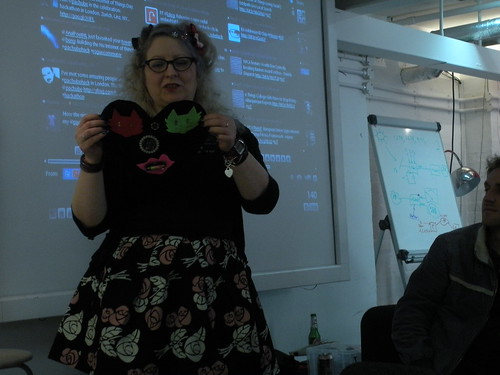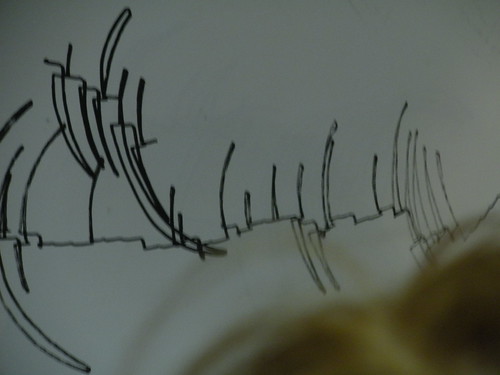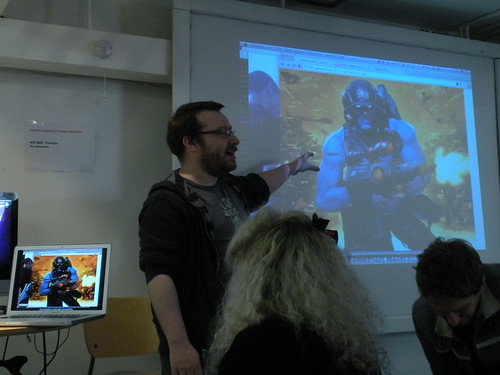The start of April saw the first Pachube (pronounced "Patch Bay") hackathon in London, Lancaster, New York, Eindoven, Linz and Zurich. Pachube is doing some very interesting and innovative work quite closely aligned to some of the Internet of Things research we are doing in Wolverhampton.
The London event was great fun, and the nice folks at 01zero-one kept us going through the night with pleanty of coffee and pizza -- geek fuel! It was good to meet up with some old friends and make some new ones. Our former student from Coventry, and first Nuffield Bursar Tim Churchard is now a founder at Ignoto Consulting and doing some excellent work in embedded systems design. Great to see one of our graduates doing so well in the current economic climate. It was also interesting to meet Sam the Techie, who I've followed on twitter for a while now. Sam is the brains behind the now famous Sukey app, which keeps demonstrators in touch with one another in real time. Sukey is probably one of the few IoT apps that has really been used in earnest by large numbers of end-users and it's a great example of putting online data to real use. The folks behind Nanode were also there, making good progress on their web-enabled Arduino board, which looks like it's going to be a great boost to hobbyist hackers. You can sign up to purchase one of the first runs of the board on the London Hackspace wiki.
The hackathon itself produced some really interesting applications. Rainycat came up with a great wearable based on the Arduino Lilypad called Yr in Ma Face! which discourages people from invading your personal space. I'd imagine it would go crazy on the London Tube network.
There was a great RFID app called Display Case which coupled simple real-world avatars with a vertical projector and real-time information:
The Nanode guys made quite a bit of progress and the Arkessa team came up with a nice Arduino hack to produce "banana graphs" with a Lego NXT (warning: charts may not be to scale :P):
and we had a wifi-enabled umbrella, much like the Senz Umbrella, although possibly more likely to electrocute its users!
My own offering was Marvin the Paranoid Android, which Usman very kindly described as "inspiring". Marvin is an attempt to create an affective interface out of some ostensibly boring data -- the temperature, remaining battery power, and so on from my laptop. Affective interfaces are ones designed to elicit emotions from their users, and to my mind, that's an important part of making the Internet of Things useful, and more than just a technical concern. Marvin is a chatbot interface, in the style of Marvin the Paranoid Android of Douglas Adams fame. You can find the data that feeds Marvin here and the chat interface itself is hosted here. The AI still needs a lot of work to be really usable, but you can already have suitably patronising and miserable conversations with Marvin, like this one:
Puny human: hi marvin
Marvin: Life, loathe it or ignore it, you can't like it.
Puny human: what is your status
Marvin: Current battery capacity is 57667mWh out of a capacity of 57667mWh that's 100% Currently at 56.0C. When I get to 107.0 I blow up. Currently working at 118.0% load. Call that reasonable working conditions? I don't.
Rain said to me during the day "if you don't document things, you lose them", and that's something I'm slowly trying to learn. This time around I made a simple slide deck to remind myself how the Marvin system worked, hopefully I'll slowly get better at documenting this sort of work, although the fact that this blog post has come out so long after the hackathon shows I've got a way to go yet!





No comments:
Post a Comment